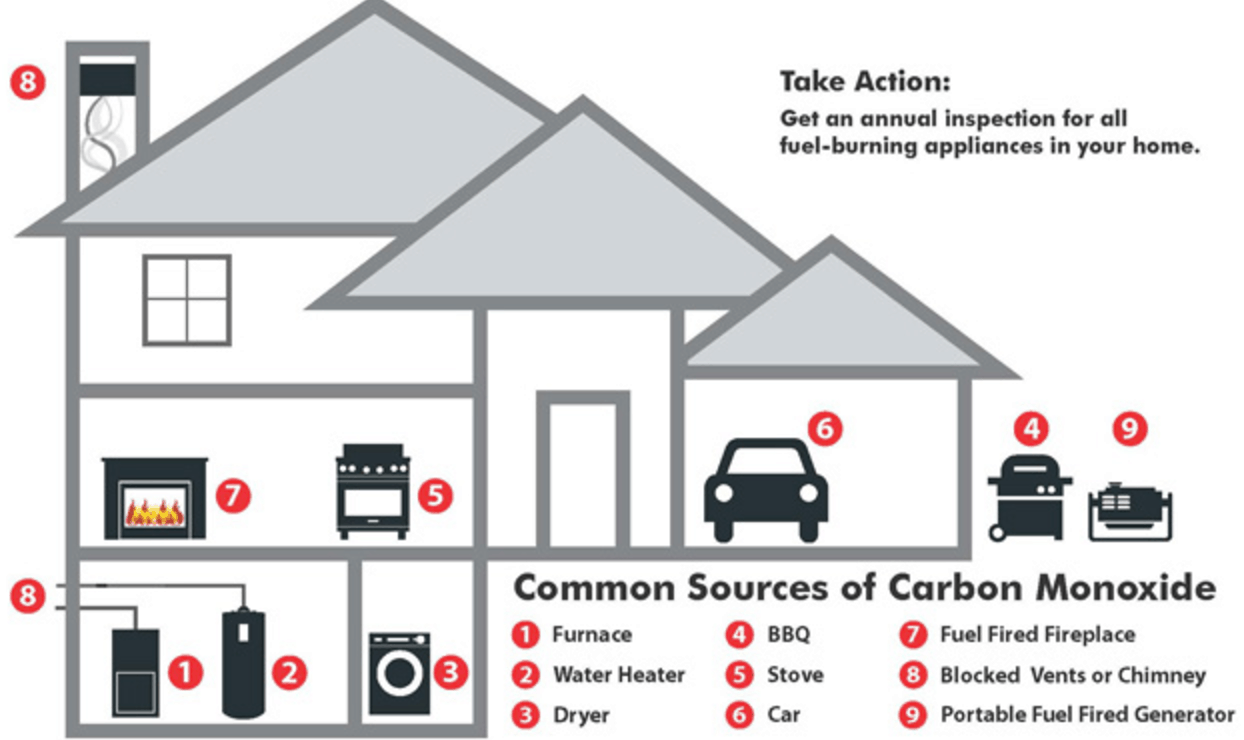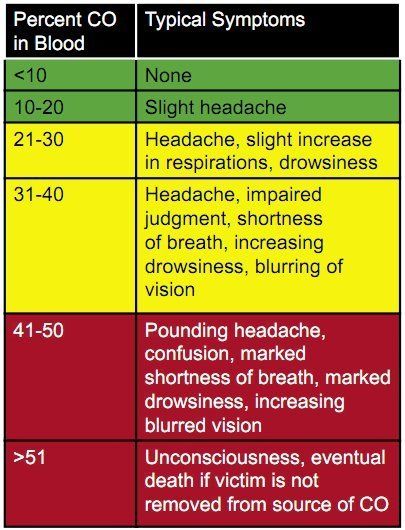

- HIGH CARBON MONOXIDE SYMPTOMS HOW TO
- HIGH CARBON MONOXIDE SYMPTOMS GENERATOR
- HIGH CARBON MONOXIDE SYMPTOMS WINDOWS

HIGH CARBON MONOXIDE SYMPTOMS HOW TO
So be sure you know the signs of carbon monoxide poisoning, what to do if you have the symptoms, and how to keep it from happening. But if you breathe too much of it, it can become deadly within minutes. You can't see, smell, or taste carbon monoxide. Without oxygen, cells throughout the body die, and the organs stop working. What makes this gas so dangerous is that when you breathe it, it replaces the oxygen in your blood. Carbon monoxide is a gas produced by burning any type of fuel-gas, oil, kerosene, wood, or charcoal. Have a qualified service person check and repair any appliances that might have caused the leak.Condition Basics What is carbon monoxide poisoning?Ĭarbon monoxide poisoning happens when you breathe too much carbon monoxide. If carbon monoxide poisoning has occurred in the home, find and repair the source of the carbon monoxide before staying there again. Do repairs before returning to where the poisoning occurred.Check that they aren't covered by tarps or debris. Keep vents and chimneys unblocked during remodeling.Clean the fireplace chimney and flue every year. Have a qualified service-provider service them yearly. Have professionals set up all gas, oil or coal-burning appliances. These include all gas appliances, space heaters and wood-burning stoves. Make sure there's space around fuel-burning appliances and engines.
HIGH CARBON MONOXIDE SYMPTOMS GENERATOR
Don't run a generator in an enclosed space, such as the basement or garage.
HIGH CARBON MONOXIDE SYMPTOMS WINDOWS
Use fuel-burning space heaters only when someone is awake to keep an eye on them and doors or windows are open. That's true even if the garage door is open. Never leave a car running in the garage, especially if the garage is attached to the house.

Risk factorsīreathing in carbon monoxide can be especially dangerous for: And smoking through a water pipe, called a hookah, has been linked to increasing numbers of younger people getting carbon monoxide poisoning. This prevents oxygen from getting to tissues and organs.īreathing in smoke during a fire also can cause carbon monoxide poisoning. Examples are using a charcoal grill indoors or a running car inside a garage.īreathing the fumes causes carbon monoxide to replace oxygen in the blood. But if they're used in a partly closed or closed space, the carbon monoxide level can be a danger. Most often the amount of carbon monoxide from these sources isn't cause for worry in areas with good air flow. Many fuel-burning products and engines make carbon monoxide.

When to see a doctorįor possible carbon monoxide poisoning, get into fresh air and seek medical care right away. Carbon monoxide can cause brain damage or death before anyone realizes there's a problem. Symptoms might include:Ĭarbon monoxide poisoning can be especially dangerous for people who are asleep, drugged or drunk. The risk of these is higher in people who lost consciousness from the carbon monoxide and older people. Symptoms related to the nervous system and brain can come on after recovery from carbon monoxide poisoning. Clearer symptoms of carbon monoxide poisoning can include: Exposure over time might lead to symptoms that can be mistaken for the flu without the fever. Carbon monoxide poisoning affects the brain and heart the most.


 0 kommentar(er)
0 kommentar(er)
